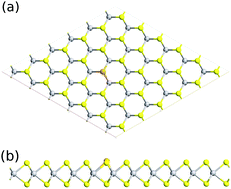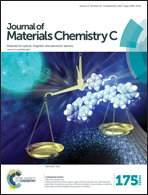Magnetic vanadium sulfide monolayers: transition from a semiconductor to a half metal by doping
Abstract
Two dimensional crystals, befitting nanoscale electronics and spintronics, can have versatile applications due to their ultrathin and flexible nature. We show by first-principles calculations that suitable doping can influence the exchange splitting of the spin and electronic states in VS2 monolayers using the meta-GGA (MGGA) method by self-consistently introducing the exact-exchange interaction to the sub d shell of the V atoms. Among the large number of non-metallic atoms, H, B, C, N, P, As, O, Se, Te, F, Cl, and Br, As appears to be a candidate for p-type doping of the VS2 monolayer with an appropriate formation energy. The enhancement of the conductivity is limited and the spin polarization of the As doped system is also slightly lowered from the mixed V-s state with an inverse spin orientation. H and halogen atoms (F, Cl, Br) are ideal candidates for n-type doping with very small and even negative formation energy. Particularly, a switch from a half semiconductor to a half metal is realized with enhanced conductivity and spin polarization in VS2 monolayers from the increased magnetic moment of the nearest neighboring V atoms of the dopants under a rather wide range of doping density, which is very promising for spintronic applications.


 Please wait while we load your content...
Please wait while we load your content...